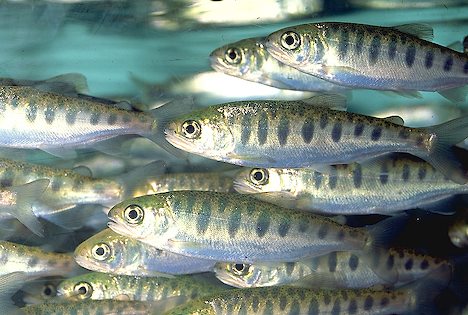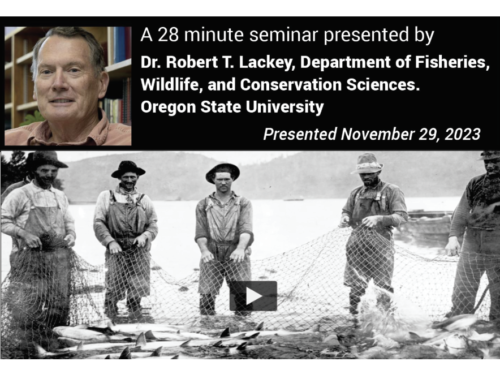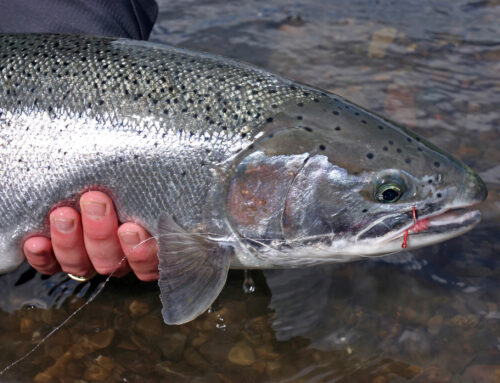
Alaska. Silver salmon/coho (Orcorhynchus kisutch).
Can hatchery salmon be produced that enhance the numbers of their wild cousins?
There are numerous examples where hatchery fish have enhanced wild numbers and in some cases saved wild fish from extinction. We have listed some of those examples below
Redfish Lake Sockeye – These were the first Pacific salmon placed on the endangered species list. Hatchery Sockeye were used to bring them back from the brink of extinction and they are currently relatively abundant.
Sandy River Spring Chinook – On the Sandy River the adult return of Spring Chinook had been reduced by early harvest practices, development, Bull Run dam and the construction of Marmot dam. During the 1950’s the average return of Spring Chinook was 336 fish. This number reflected harvest in the lower basin and escapement at Marmot dam. By 1960’s that average had dropped to 168 adults and all fishing was closed from the last Saturday in April until September 1st to protect these few remaining fish. In the early 1970’s hatchery releases of Spring Chinook began and were expanded in the 1980’s when the state managers of the time launched an aggressive program to supplement the declining wild Spring Chinook run with Willamette stock from the Clackamas hatchery. Currently state managers are reducing hatchery production to protect the wild population from the hatchery fish that created them.
Clackamas Spring Chinook – The wild run on the Clackamas had fallen to an average of around 506 adults over the 21 year period from 1958 -1978. An intensive hatchery management program was implemented and resulted in a wild spring Chinook population that averaged around 2,000 adults.
Above Bonneville Coho – The process of reintroducing Coho above Bonneville dam, after they had become extinct, was started by out planting lower Columbia coho into the Yakima basin in hopes they would find their way to the ocean and back again to spawn in their new home. It has worked with good numbers of naturally produced fish returning. They are currently only using these fish that started and ended their life cycle in the Yakima basin.
Above Willamette Falls Coho – Hatchery Coho were used to create one of the most singularly outstanding populations of wild Coho salmon above Willamette Falls, an area with no historical population of wild Coho. The progeny of those lowly hatchery created a wild run that returns 6 post harvest adults per spawning pair.
Lower Columbia Tule Chinook – It is inarguable that if hatchery fish were not spawning in the wild and contributing to the population, the Columbia river Tule population would blink out.
Hood River Spring Chinook – By the late 1960’s the Hood’s spring Chinook run was effectively “extirpated” according to federal fish biologists. Beginning in the early 1990’s, the tribes and Oregon Department of Fish and Wildlife (ODFW) started stocking the river with hatchery bred spring Chinook, taken from the Deschutes River to try and resurrect the wild run. Utilizing a “supplementation” approach where hatchery fish return to the river and are allowed onto wild spawning grounds When their offspring return, they’re counted as wild. This has resulted in the recolonizing of tributaries throughout the Hood river basin, increased redd counts and an increase in the percent of smolts that are returning as adults.
Snake River Fall Chinook – The Nez Perce tribe has used hatchery fish and incubator boxes to increase that wild run and reverse its decline.



